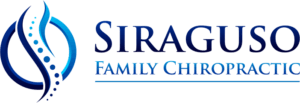Spinal Stenosis
Spinal stenosis is the narrowing of spaces within the vertebra, which results in pressure on the nerves that travel through the spine. Spinal stenosis most commonly occurs in the neck and the lower back. In some cases, spinal stenosis is asymptomatic, whereas, others may experience muscle weakness, numbness, tingling and pain. The most common cause of spinal stenosis is osteoarthritis which is generally caused by long term wear and tear of the spine. In severe cases of spinal stenosis, surgery is recommended to create additional space for the nerves or spinal cord. However, is surgery always necessary? The answer is no, because non-surgical treatment methods have also proven to be effective in reducing the symptoms of spinal stenosis, and stopping the progression of the degenerative changes.
How treatment for Spinal Stenosis
One of the most common causes of back pain among older adults is lumbar spinal stenosis. Lumbar spinal stenosis usually has an underlying cause, such as osteoarthritis and bulging disc. The condition can cause moderate to severe pain because of the extra pressure on the spinal nerves. If you have a history of back problems as a result of trauma you are at a greater risk of developing spinal stenosis. In addition to this, a lack of physical activity, prior surgeries, tumors, cysts and poor posture also contribute to underlying conditions. In order to treat spinal stenosis, your chiropractor will first identify and treat the underlying cause of the condition. By doing so, the doctor can help you find relief from both the issues using different conservative techniques, including spinal adjustment, strengthening exercises and stretches. The purpose of these methods are to reduce pain, improve posture, increase range of motion, alleviate muscular tightness, remove nerve pressure, and stop the progression of degeneration in the spine.
Research
Newly released data shows that the symptoms of spinal stenosis can be alleviated using non-surgical approaches. A randomized clinical trial was conducted to study the effect of chiropractic care on patients with spinal stenosis. It was seen that after first two months of treatment, the patients who received chiropractic care reported the greatest improvement in physical function and symptoms. Even though there are different contributing causes and symptoms of spinal stenosis for every individual, professional chiropractic care can help relieve symptoms and improve your quality of life.
At Home Therapy
See our article on lumbar inversion tables for more information on at home therapies. A teeter inversion table may be beneficial for this condition.
Schedule an Appointment
If you or any of your loved ones would like to schedule an appointment Click Here!


